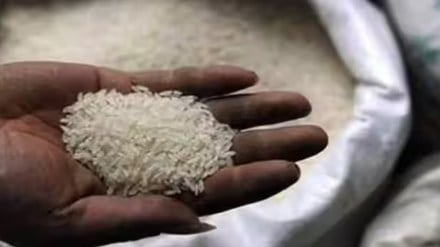India’s recent ban on export of non-basmati white rice has created quite a furore internationally. While on the one hand there are worries about the move likely to trigger a rise in global rice prices adversely impacting poor countries, there is also the need to ensure adequate supplies in the domestic market and keep prices in check. While the IMF has raised concerns about the move exacerbating volatility in food prices, experts say the picture on food inflation will be clear only after the monsoon plays out completely.
According to the International Monetary Fund’s chief economist Pierre-Olivier Gourinchas said, “In the current environment, these types of restrictions are likely to exacerbate volatility on food prices in the rest of the world. And they can also lead to retaliatory measures. So, they are certainly something that we would encourage the removal of these type of export restrictions, because they can be harmful globally.”
Addressing India’s inflation and food security concerns
However, there is another aspect to it. Dharmakirti Joshi, Chief Economist, Crisil highlighted that the ,“Two pressure points on consumer inflation are food and services. Risks to food inflation come from uneven monsoons and possibility of El Nino in the later half of season.” While he isn’t too concerned about vegetable inflation, which flares from time to time, he feels the “worry is on cereals and pulses which are already witnessing double digit inflation.”
He explained how the “Government has taken a number of steps from banning non basmati exports to market intervention to cool food inflation.” According to him, short-term up-tick is not a worry but “when prices increase on a sustained basis it becomes a matter of concern for monetary policy. Picture on food inflation will be clear after the monsoons have played out.”
Dr Sukhpal Singh, professor and former chairperson, Centre for Management in Agriculture at the Indian Institute of Management (IIM), Ahmedabad for instance draws attention to three things to ponder. One, that while it could be argued that the rice ban may impact global prices and impact poorer nations, imposition of the ban is a call each country has to take on its own keeping in view the food security concerns of its own country first and therefore India is well within its right to exercise that option. Second, the only argument against the ban could be that if the prices have been rising then perhaps those who can afford should pay more since there is Food Security Act and the poor in any case get the grains at a highly subsidised rate. Finally, as far as the impact on the poor nations globally, India could bilaterally negotiate and accommodate their concerns on their food security and help.
Close on the heels of the ban on exports of non-basmati white rice imposed last week to contain cereal inflation, the government is likely to put restrictions on supply of surplus rice from the Food Corporation of India’s (FCI) stocks for manufacture of ethanol.
India growth story intact
Inflation in India, as per IMF, is back inside the target range estimates. Speaking on the inflation forecast for India, IMF chief economist said that they expect it to be around “4.9% for this year, and that’s well inside the 2 to 6 target band. Food prices – easing is what has contributed to that, but also the strong actions by the Reserve Bank of India, which raised rates. And we see this need to continue to balance the pressures for inflation and output to make sure that inflation stays inside that target range.”
The IMF projections however outlined that the India growth story remains strong and one-sixth of total global growth is accounted for by India this year. For 2023, IMF has a forecast of 6.1% growth for India. That’s well above the regional average of 5.3%. Though it is seen moderating after a very strong 2022, there is an upside revision of 0.2 percentage points for 2023.
